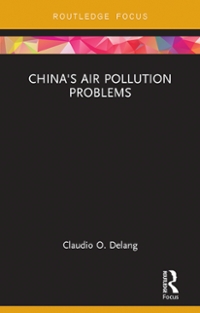Question
Jasmine owns a farm and sells produce to local restaurants and grocery stores. If her farm is perfectly competitive, what profits and losses can she
Jasmine owns a farm and sells produce to local restaurants and grocery stores. If her farm is perfectly competitive, what profits and losses can she expect to make in the short and in the long run?
Jasmine may earn economic profits or losses in the short run and in the long run.
Jasmine may earn zero economic profit in the short run and profits in the long run.
Jasmine may earn zero economic profit in the short run and losses in the long run.
Jasmine may earn economic profits or losses in the long run but not in the short run.
Jasmine may earn economic profits or losses in the short run but not in the long run.
Which of the following describes a situation where the social marginal cost is equal to the social marginal benefit at equilibrium?
Oligopoly
Monopoly
Positive externality
Allocative efficiency
Negative externality
Applying cost-benefit analysis, a business should only purchase a large machine if the business
can pass the cost of the machine onto consumers
projects sales growth based on the machine's use
estimates that the machine's cost is less than the revenue it will generate
assigns a high utility to the machine based on consumer perceptions
has enough financial capital to replace the machine in five years
Country X has a Gini coefficient of 0.45, whereas Country P has a Gini coefficient of 0.40. What must be true about these two countries?
Country X has a higher income per capita than Country P.
Country P has a higher income per capita than Country X.
Country X has a higher standard of living than Country P.
Country X has higher economic inequality than Country P.
Country P has higher economic inequality than Country X.
Top Limited is currently maximizing its profits and earning only normal economic profits. Which of the following describes Top's situation?
Marginal revenue = marginal cost; total cost = zero
Marginal revenue < marginal cost; total revenue = total cost
Marginal revenue = marginal cost; total revenue > total cost
Marginal revenue < marginal cost; total revenue < total cost
Marginal revenue = marginal cost; total revenue = total cost
Suppose the price elasticity of demand for widgets is 2, and the price of widgets decreases by 10 percent. The change in quantity demanded of widgets must
increase by 5 percent
decrease by 5 percent
increase by 20 percent
decrease by 20 percent
decrease by 200 percent
A firm will continue to hire workers so long as ________ is greater than or equal to ________.
total product; total cost
marginal product; marginal cost
marginal revenue; marginal cost
average revenue product; average factor cost
marginal revenue product; marginal factor cost
Moon Limited is a monopolistic firm. It sells its current output quantity at a price higher than its marginal cost. Which of the following is correct?
The firm is making economic losses.
An increase in the firm's output will increase its profits.
The price at which the firm is selling produces no deadweight loss.
The firm would be allocatively efficient if price would equal marginal cost.
The consumers will be ready to pay more than marginal cost for a higher quantity.
If marginal product increased from 50 to 60 when the quantity of labor increased from 200 to 205, then what must be true of costs over this range of output?
Marginal costs are decreasing.
Marginal costs are increasing.
Average total costs are increasing.
Average fixed costs are increasing.
Average variable costs are decreasing.
Assume a coal power plant is causing an increased amount of pollution because there is a change in the amount of carbon in the coal. If the pollution causes a negative social externality that has no effect on private costs and benefits, in which of the following ways does the socially efficient equilibrium compare to the free market equilibrium?
Optimal social quantity will equal private quantity, and social price will equal private price.
Optimal social quantity will be less than the private unregulated quantity, and social price will be less than private price.
Optimal social quantity will be less than the private unregulated quantity, and the optimal social price will be greater than the private price.
Optimal social quantity will be greater than the private unregulated quantity, and social price will be less than private price.
Optimal social quantity will be greater than the private unregulated quantity, and social price will be greater than private price.
Step by Step Solution
There are 3 Steps involved in it
Step: 1

Get Instant Access to Expert-Tailored Solutions
See step-by-step solutions with expert insights and AI powered tools for academic success
Step: 2

Step: 3

Ace Your Homework with AI
Get the answers you need in no time with our AI-driven, step-by-step assistance
Get Started


